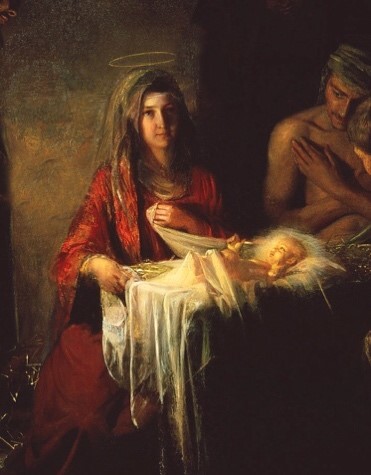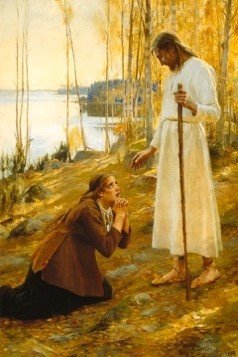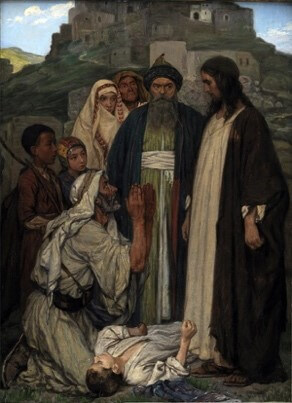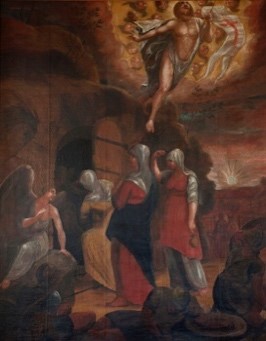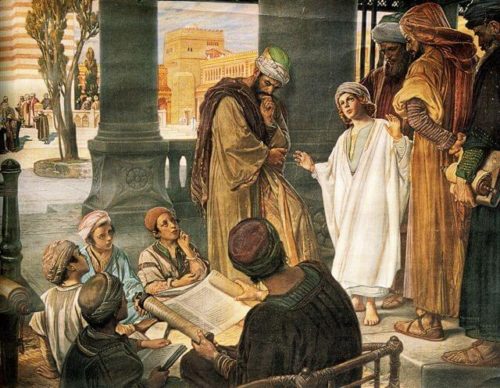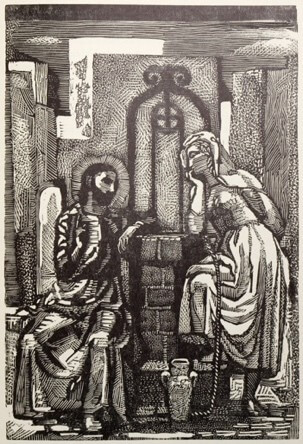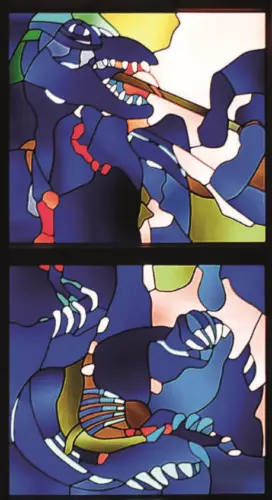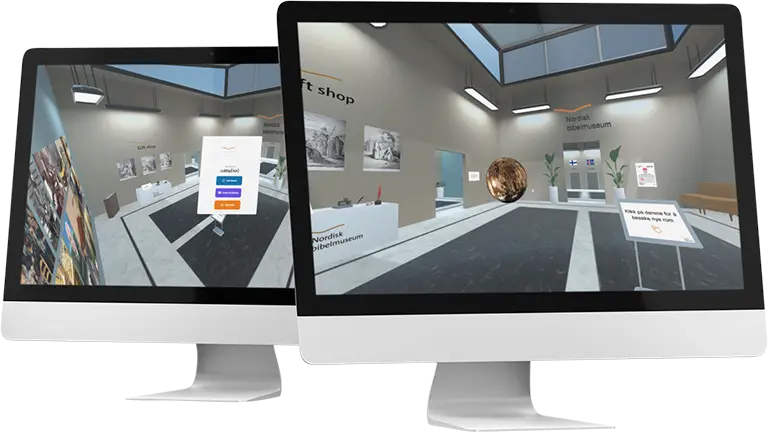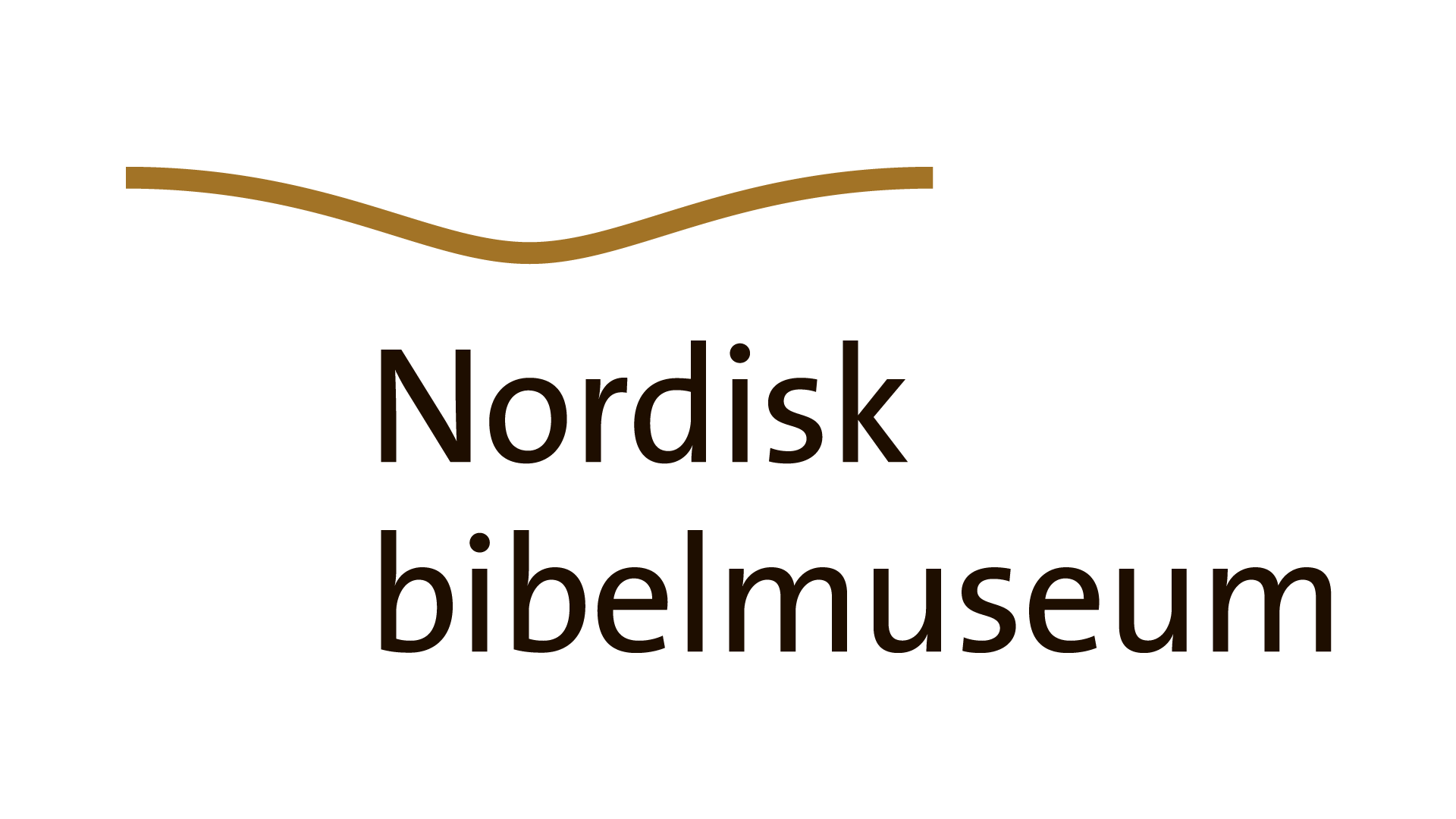A lecturer at the University of Bergen said: “Knowing the Bible is key to understanding the culture one is part of, and thus also to understanding oneself. Not knowing the Bible, on the other hand, is a form of cultural illiteracy” [1].
The reason for this statement is that there is no other book that has affected our culture as much as the Bible. In this three-part series of articles, we will show how the Bible has influenced painters, writers, composers and musicians.
We will start with the Nordic painters.
Carl Heinrich Bloch (1838–1890)
Danish painter known especially for his historical and religious paintings. His early works show rural motifs from everyday 19th century life, but after having traveled Europe one can see a shift towards religious motifs. In 1865, Bloch was commissioned to paint 23 scenes from the life of Christ by the Frederiksborg Castle Church, where they are still located today.
The painting shown is entitled The Annunciation, and was painted in approx. 1890.
Albert Edelfeldt (1854–1905)
Finnish-Swedish naturalist painter known for his beautiful paintings of historical and religious events. Before starting on a paining he would do several sketches and also took photographs. One of Edelfeldt’s most famous paintings is the image of Jesus in a birch forest with a kneeling Mary Magdalene in front of him.
The painting shown was painted in 1890.
Axel Theophilus Helsted (1847–1907)
Danish painter known for his figurative and realistic style, considered one of the greatest Danish artists of all time. At the beginning of his career he distinguished himself as an outstanding portrait painter, but after a time in Italy he expanded his repertoire of motifs. Helsteds faith was strenghened after a trip to Palestine, leading to a number of paintings with religious motifs.
The painting shown is entitled Jesus heals a child, and was painted in 1891.
Per Hörberg (1746–1816)
Swedish painter known for his portraits and paintings of peasant life, along with etchings and woodcuts done in a strong personal style. He painted 87 altarpieces. Hörberg is considered one of Sweden’s foremost artistic figures. Countess Fredrika Aurora De Geer of Finspång was one of Hörberg’s foremost supporters and protectors. The countess gave Hörberg many large commissions and also let him take part in her influential circle of friends at Finspång castle.
The picture shows an altarpiece depicting Jesus’ resurrection, painted in 1806.
Julius Kronberg (1850–1921)
Swedish painter considered to be one of the foremost painters of his time. Between 1875 and 1878 he stayed in Munich, where he came into contact with a number of young Norwegian painters, such as Markus Grønvold, Christian Meyer Ross, Kitty Kielland, Eilif Peterssen, Harriet Backer and Erik Werenskiold. In Munich he also came in contact with Henrik Ibsen (1828–1906), who persuaded him to paint his famous portrait, now hanging over the desk in his study at the Ibsen Museum in Oslo. In 1903, Kronberg painted a beautiful painting of Jesus speaking in the temple.
Painting: Jesus at twelve in the temple. Luke 2: 41–52 Painted in 1903.
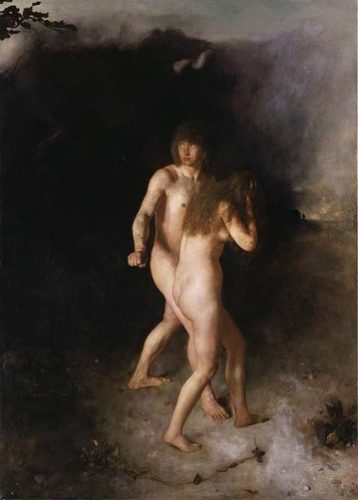 Hans Heyerdahl (1857–1913)
Hans Heyerdahl (1857–1913)
Heyerdahl was a proponent of realism in Norwegian art and has painted several Norwegian cultural personalities, such as Henrik Ibsen and Knut Hamsun. In 1877 he painted “Adam and Eve Expelled from Paradise”, hanging today in the National Gallery. The picture is said to be a modern history painting, where the depiction should grip the viewer in the same way as an authentic, historical document. This work of art won him a gold medal at the World’s Fair in Paris.
The painting shown is entitled Adam and Eve Expelled from Paradise, painted in 1877. Oil on canvas. The National Gallery.
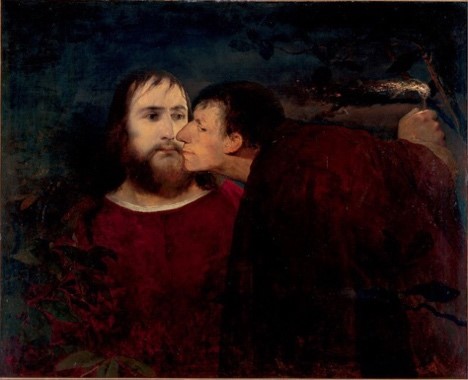 Eilif Peterssen (1852–1928)
Eilif Peterssen (1852–1928)
Norwegian painter known for the design of the Norwegian national coat of arms featuring the Norwegian lion, from 1905. Peterssen is considered one of the Skagen painters. In 1877 he painted Judas Iscariot, or the kiss of Judas, which shows Judas betraying Jesus by kissing him and thus signaling to his fellow conspirators to take him prisoner. The picture hangs today at the National Gallery.
The painting shown is entitled Judas Iscariot, painted in 1877. Lillehammer Art Museum.
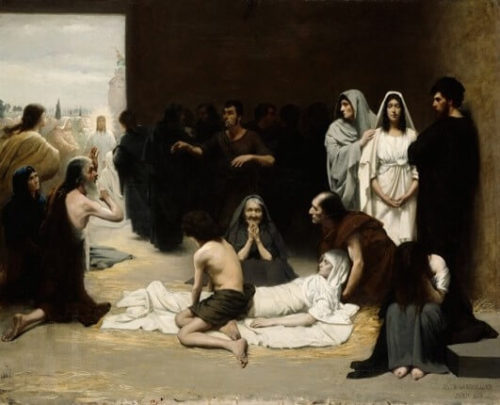 Asta Nørregaard (1853–1933)
Asta Nørregaard (1853–1933)
Norwegian painter best known for her portraits, made with great technical skill and richness of detail. She was a student of Eilif Peterssen from 1875–79.
In 1881, Nørregaard made her debut with the painting L’attente de Christ (Christ Comes), which shows the old and the poor waiting for Jesus. Today the painting is in the collection of the National Museum. In 1882 she was commissioned to do the altarpiece for Gjøvik church. In 1920, Nørregaard received the King’s gold Medal of Merit.
The painting shown was painted in 1881. Dimensions: 93.5 x 115.1 cm.
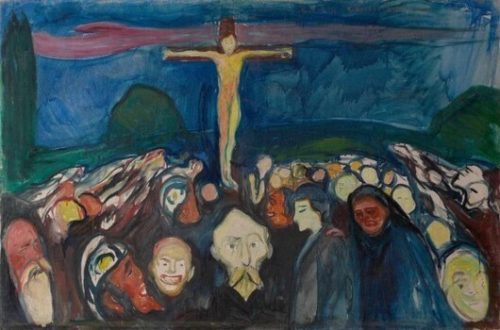 Edvard Munch (1863–1944)
Edvard Munch (1863–1944)
Edvard Munch is considered one of the greatest Norwegian artists of all time. We may not associate Munch’s paintings primarily with biblical motifs, but Munch’s faith was with him all his life. One of his paintings shows the motif Jesus at Calvary. Several texts have been written about Munch’s Christian faith and how the Bible influenced his work. It is said that Munch had three books on his bedside table; The Bible, Hans Jæger’s fra Kristiania-Bohemen and Fyodor Dostoevsky’s The Idiot.
The painting shown is entitled Calvary, painted in 1900. Oil on canvas 80 x 120 cm. The Munch Museum.
Henrik Sørensen (1882–1962) 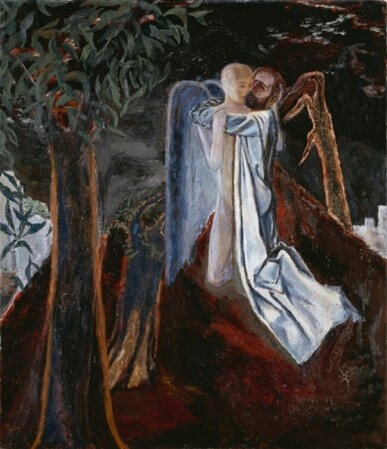
Norwegian painter Henrik Sørensen is known for his religious expressionist motifs. His painting technique, characterised by thick brushstrokes, rebelled against realism. In 1921, Sørensen was commissioned to illustrate Bjørnstjerne Bjørnson’s Bondefortellinger, a work comprising approximately 200 drawings. This is an interesting parallel, as the Bible also inspired Bjørnson in several of his poems and short stories. Sørensen decorated several altarpieces in Norwegian churches.
The painting on display is titled “Gethsemane” (1925).
Ørnulf Ranheimsæter (1919–2007)
Norwegian artist Ørnulf Ranheimsæter was known for his drawings, graphic works, and book illustrations. He is considered a significant cultural figure in Norway and served for several years as a drawing teacher at the State School of Crafts and Art. Ranheimsæter illustrated The Four Gospels, published by Grøndahl and Dreyer in 1970. The images, created as woodcuts, were printed from the original blocks.
The woodcut shown is titled “The Four Gospels” (1970).
Jakob Weidemann (1923–2001)
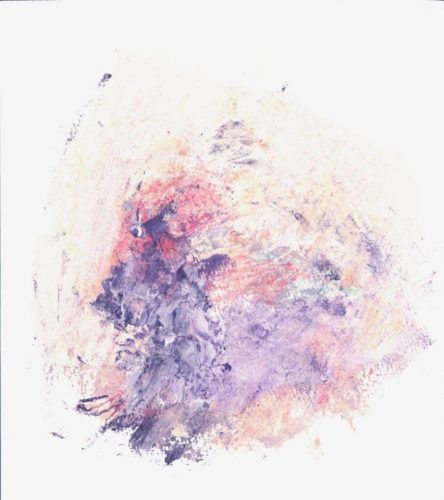
Norwegian painter Jakob Weidemann was known for his expressionist style, which tends toward a lyrical appearance. Weidemann painted several biblical motifs and, among other works, illustrated the Gospel of Mark, published by Cappelen Damm in 1996, and the Christmas Gospel, published by Stenersens Forlag in 1991.
Illustration for the Gospel of Mark..
Frans Widerberg (1934–2017)
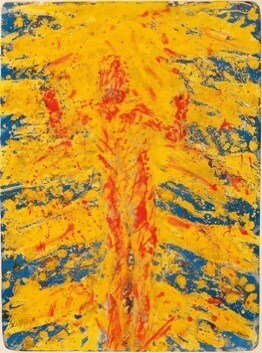
Norwegian painter Frans Widerberg was known for his graphic works in strong primary colours. He deliberately avoided blending white and black, instead relying on colour contrast to create depth in his paintings. With man and space as motifs, Widerberg explored central questions about life. He painted the altarpiece in Volsdalen Church (1974) and created several versions of the resurrection.
The motif shown is titled “Resurrection II” (1974).
Colour lithograph (83 x 61 cm).
Håkon Bleken (b. 1929)
A renowned Norwegian painter, Håkon Bleken is considered one of the country’s foremost contemporary artists. He has executed several significant church decorations throughout his career. For instance, Bleken decorated Spjelkavik Church with stained glass windows depicting the biblical narrative from Creation to Revelation. He once remarked, “You don’t have to be a Christian to create biblical motifs.” In many of his paintings, Bleken draws direct inspiration from the Bible, encouraging others to use this source not only in a religious context but also as a broader wellspring of artistic inspiration.
Stained glass window from Spjelkavik Church.
Dag Hol (b. 1951)
Norwegian painter Dag Hol is celebrated for his exceptional ability to portray light in his works. His paintings, influenced by masterpieces from the Renaissance to the Romantic period, often stand out as unique, individual “objects.” One painting in the museum features the Bible, bathed in an almost “heavenly” light. Hol is also renowned for his landscape interpretations, where light plays a pivotal role, creating a dreamlike quality. In 2019, he painted a series of 36 Bibles, each emphasizing the central role of light. One of these works is currently on display at the museum.
Håkon Gullvåg (b. 1959)
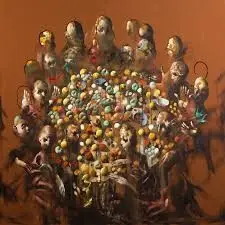 Norwegian painter Håkon Gullvåg is known for his distinctive portrayals of alienated figures set against gloomy landscapes. His work blends figurative and abstract elements, often incorporating symbolic and surrealistic features. Gullvåg has also contributed to church art through altarpieces and church textiles. Additionally, nine of his paintings are displayed in a church dedicated to the site where Jesus was purportedly baptized in the Jordan Valley.
Norwegian painter Håkon Gullvåg is known for his distinctive portrayals of alienated figures set against gloomy landscapes. His work blends figurative and abstract elements, often incorporating symbolic and surrealistic features. Gullvåg has also contributed to church art through altarpieces and church textiles. Additionally, nine of his paintings are displayed in a church dedicated to the site where Jesus was purportedly baptized in the Jordan Valley.
The work on display is titled The Last Supper (190 x 190 cm, painted 2014).
Arne Paus (b. 1943)
 Arne Paus is a Norwegian painter celebrated for his classical motifs rendered in a realistic style. His landscapes and portraits are characterized by a dramatic interplay of light and shadow, creating scenes that can be dreamy, beautiful, or somber. Paus often draws on biblical themes to produce works that resonate with contemporary relevance. The painting on display, titled Atonement, depicts the prodigal son’s return as described in Luke 15:11–32.
Arne Paus is a Norwegian painter celebrated for his classical motifs rendered in a realistic style. His landscapes and portraits are characterized by a dramatic interplay of light and shadow, creating scenes that can be dreamy, beautiful, or somber. Paus often draws on biblical themes to produce works that resonate with contemporary relevance. The painting on display, titled Atonement, depicts the prodigal son’s return as described in Luke 15:11–32.
Painted in 1987, this oil on canvas work measures 150 x 150 cm.
Sverre Bjertnes (b. 1976)
 Painter and graphic artist Sverre Bjertnes is considered one of Norway’s most important contemporary artists. The painting on display, titled The Expulsion, is inspired by Masaccio’s early 15th-century work The Expulsion of Adam and Eve (circa 1423).
Painter and graphic artist Sverre Bjertnes is considered one of Norway’s most important contemporary artists. The painting on display, titled The Expulsion, is inspired by Masaccio’s early 15th-century work The Expulsion of Adam and Eve (circa 1423).
Sources
[1] Framtida.no
Want to read more?

